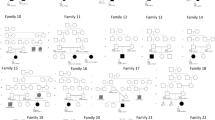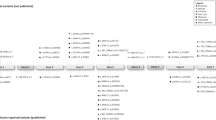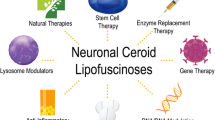Abstract
The neuronal ceroid lipofuscinoses (NCL) are progressive neurodegenerative diseases occurring in infancy and adulthood. Atypical forms of these diseases have been described and are particularly represented in the late-infantile and juvenile onset groups. Recent progress in biochemistry and molecular genetics has identified some of these variants as separate disease entities while disclosing the phenotypic variability of some classic forms. We report the result of a retrospective analysis performed on a series of 27 NCL patients, 15 of which were atypical as to clinical and/or pathological findings. Most of such patients, belonging to the late-infantile onset group and displaying homogeneous clinical-pathological features, were suggestive for CLN6. The two atypical juvenile NCL patients had features which resembled the “protracted form” of the disease. Given their relative frequency, strict clinical and pathological criteria are still the most useful tools for identifying and characterizing atypical forms and for defining phenotype-genotype correlations.
Similar content being viewed by others
Author information
Authors and Affiliations
Rights and permissions
About this article
Cite this article
Nardocci, N., Morbin, M., Bugiani, M. et al. Neuronal ceroid lipofuscinoses: detection of atypical forms. Neurol Sci 21 (Suppl 1), S57–S61 (2000). https://doi.org/10.1007/s100720070041
Issue Date:
DOI: https://doi.org/10.1007/s100720070041




